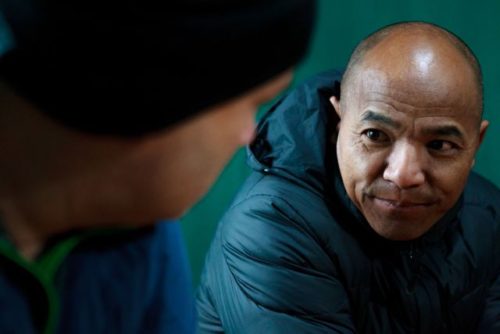
The tragic events that have unfolded in Nepal this week are a stark reminder to us all of the risks associated with travelling in the mountains. Being safe, keeping our people safe and staying safe in Nepal is always our priority. The deaths and injuries caused in the Annapurna Conservation Area this past week have primarily resulted as a consequence of extremely heavy and unexpected snowfalls.
At Trek Climb Ski Nepal, we’re incredibly proud of our 100% safety record. #noshortcuts is our mantra. Not wanting to rest on our laurels, we’re excited to be launching our “Follow-Us-Live” technology. This is a great new feature we’ve commenced rolling out across all our trips so that people can easily follow (in real-time) the progress of friends and family that are travelling with us in Nepal. We’ve drawn attention to this largely as an interactive feature that will bring the excitement of our Nepal adventures into the lounge rooms of those watching from home. But how would this technology have assisted our groups had we been travelling in the Annapurna region this past week?
Follow-Us-Live Technology
Significantly, our Follow-Us-Live technology would have provided search and rescue workers with accurate GPS coordinates of our people. With the location of our people known, efforts to find and evacuate them could immediately be concentrated in the right areas. Time becomes critical when people are missing in cold, high altitude environments. Our Follow-Us-Live technology provides us with the ability to pinpoint the exact location of our groups in real-time. In circumstances like these, staying safe in Nepal relies on being located quickly.
Heavy snowfalls in the mountains bring increased risk of avalanche. Last Tuesday (Oct 14, 2014) two groups of Canadian trekkers decided to proceed with their treks into the narrow valleys north of the Annapurna range. Later that day an avalanche of snow and rock swept four of them away. We are now receiving reports that as many as 27 people are missing or dead as a result of this weeks blizzards and avalanches in the Annapurna region.
It’s not appropriate we comment on the operational decisions made by other tour operators in Nepal. Nor is it wise for us to comment on the emergency management protocols employed by other companies. What is relevant is how we would likely have responded in these circumstances.
Your response plays a big role in staying safe in Nepal
Freak snowfalls in the Nepal Himalaya are not rare and we only need to go back 12 months (almost to the day) to recall very similar circumstances in the Everest region. In October 2013, we had a group of 5 trekkers participating on our Everest Circuit trek. With some of the highest recorded snowfalls ever recorded in a 48-hour period in the Everest region, our group opted to sit tight in Gokyo for 4 days. This delay resulted in considerable (and understandable) inconvenience and frustration to our guests. Our guides deemed this was by far the safest course of action and also decided against attempting to cross the Cho La Pass, which is one of the highlights of this trek.
I was in Lukla at the time with another expedition and spoke with one of our frustrated guests and explained the reasons for our guide’s decisions. In the following days, we became aware that several people had died in the Everest region as a result of avalanches and blizzards.
Our trekking and climbing guides are extremely experienced and dedicated high altitude workers. The majority of our trekking guides are also climbing guides so when the snow begins to fall, they are thinking like mountaineers. And when the snow is really building up, the decisions they’ll make are based not only on their own experience, but mountaineering best practice.
Our trip leaders and guides are mindful that very occasionally, they’ll need to make operational decisions based on safety that might not be popular. We hope that staying safe in Nepal is one of the main reasons people decide to travel with us. Planning for and dealing with emergencies in the mountains is a crucial part of the Trek Climb Ski Nepal charter. We take this responsibility to our guests and staff alike very seriously. We enjoy a safety record in the Nepal Himalaya second to none and plan to keep it that way.
Watch this Trek Climb Ski Nepal expedition and see our people in action.